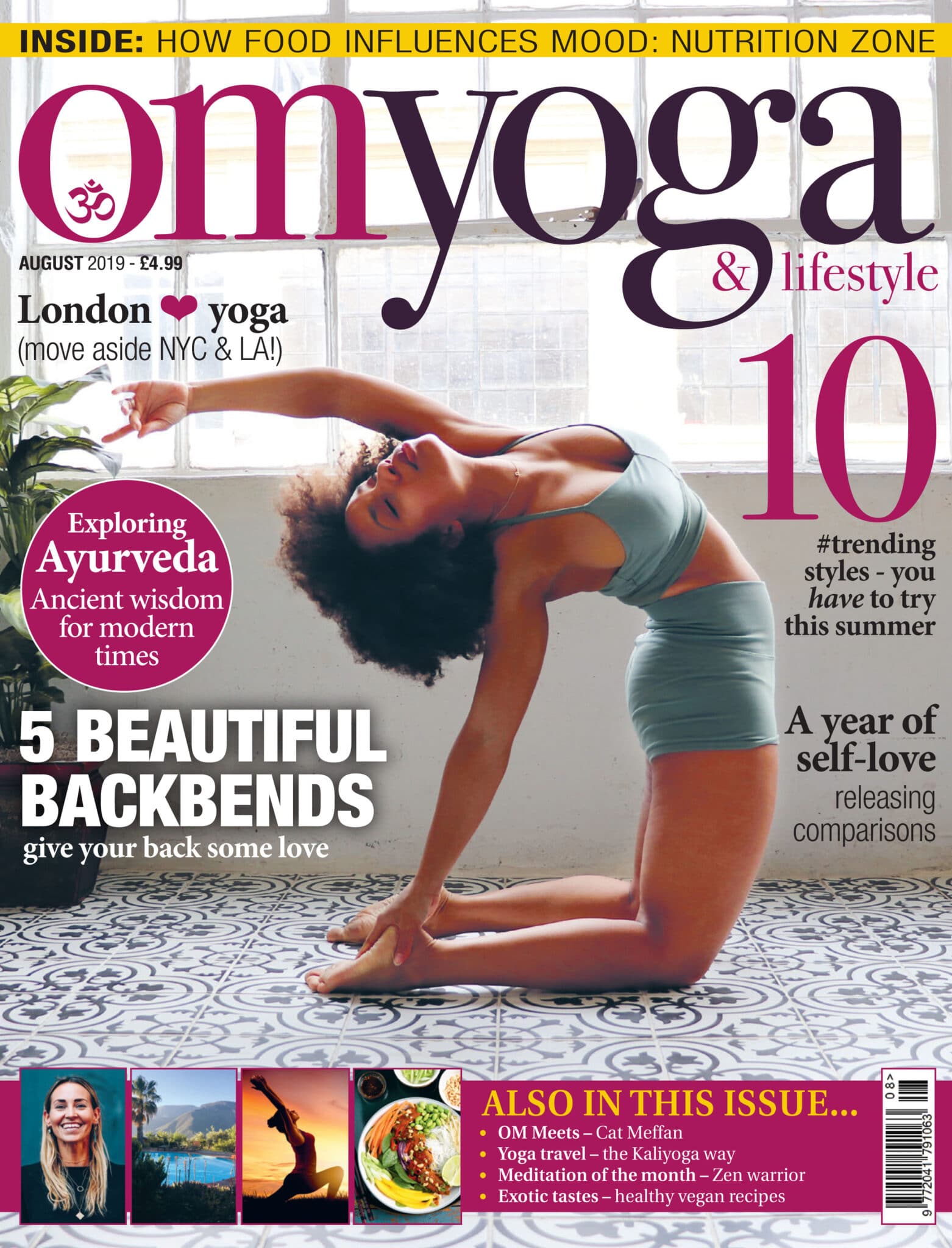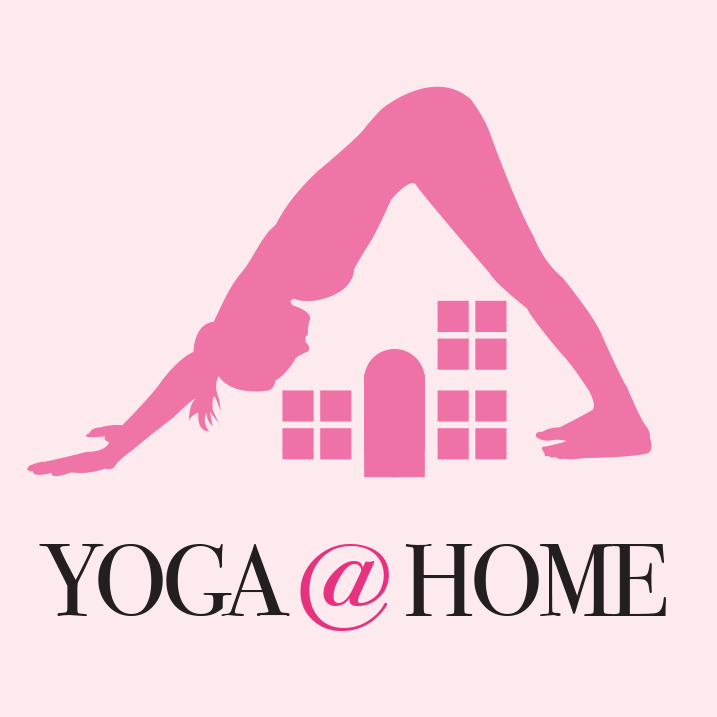
5 beautiful backbends
Open your heart and give your back some love with this backbend series by Eleonora Rachele Zampatti
Backbends are therapeutic, healing and they can challenge you physically, mentally and emotionally. Incorporating them into your practice helps you present a more positive and lifted version of yourself to the world. This short sequence of postures will help to open up the front body and invite new space, awareness and life into the places within yourself that are often closed off. It will target specific parts of the body, including the hip flexors, quadriceps, shoulders and thoracic spine, in a challenging but approachable way. Some of it may look quite advanced but, as always, take things at your own pace and to your own level to give that back of yours some love.
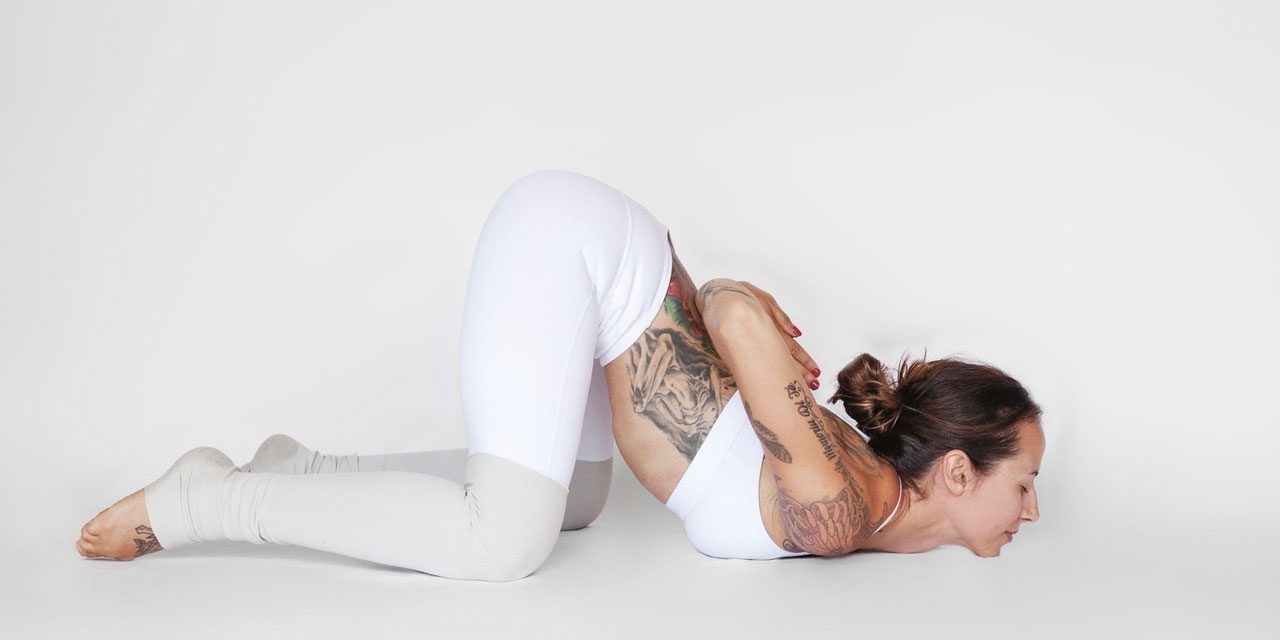
1 Puppy Pose
Puppy pose (uttana shishosana) is like the perfect combination of downward dog and child’s pose, and can be used as a variation of either. In this sequence, we can use either an extended arm version or a reverse prayer version for a stronger stretch in the shoulder area (as in the picture). This posture invites the heart to melt down toward the ground, stretching the spine in both directions and opening our shoulder and throat area.
Start in tabletop position and slowly begin to walk your hands out in front of you, lowering your chest down toward the ground. Keep your hips over your knees and your arms shoulder-distance apart, and gently release your forehead down to the ground.
Activate your arms by pressing into the palms of your hands and lifting your elbows and forearms away from the ground. Draw your shoulder blades onto your back and reach your hips up high toward the ceiling. If you choose to work on reverse prayer slowly bring your arms behind the lower back, bring your palms together and reverse your prayer behind your back. Relax and breathe into your back, lengthening your spine in both directions.
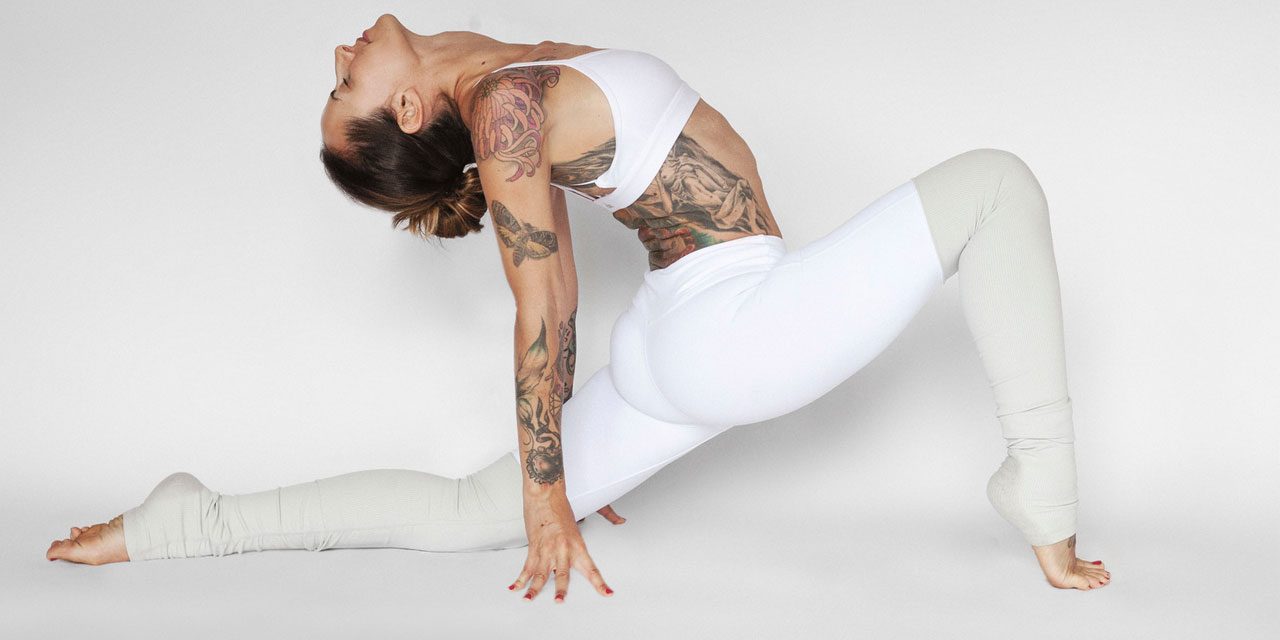
2 Low Lounge
Anjaneyasana or low lunge pose helps to achieve a strong sense of balance, combined with a sense of openness in the legs, hips, and groin.
From puppy pose slide your body on your mat, move through baby cobra, cobra or up dog and end in your down dog. From there, raise your right leg back on the inhale and on the exhale bring your knee into your chest. Place the right foot onto the ground and the back knee on the mat releasing the top of the left foot on the ground. Keep the knee directly over the ankle if it feels like enough for your body, bring your fingertips to the ground on either side of your hips (you can also rest both hands on the front knee if taking the fingertips down feels like too much) and relax your shoulders away from your ears. You can also lift both the arms over your heart. As you continue to breathe deeply, soften the weight of your body down into your hips, and draw your tailbone down toward the ground.
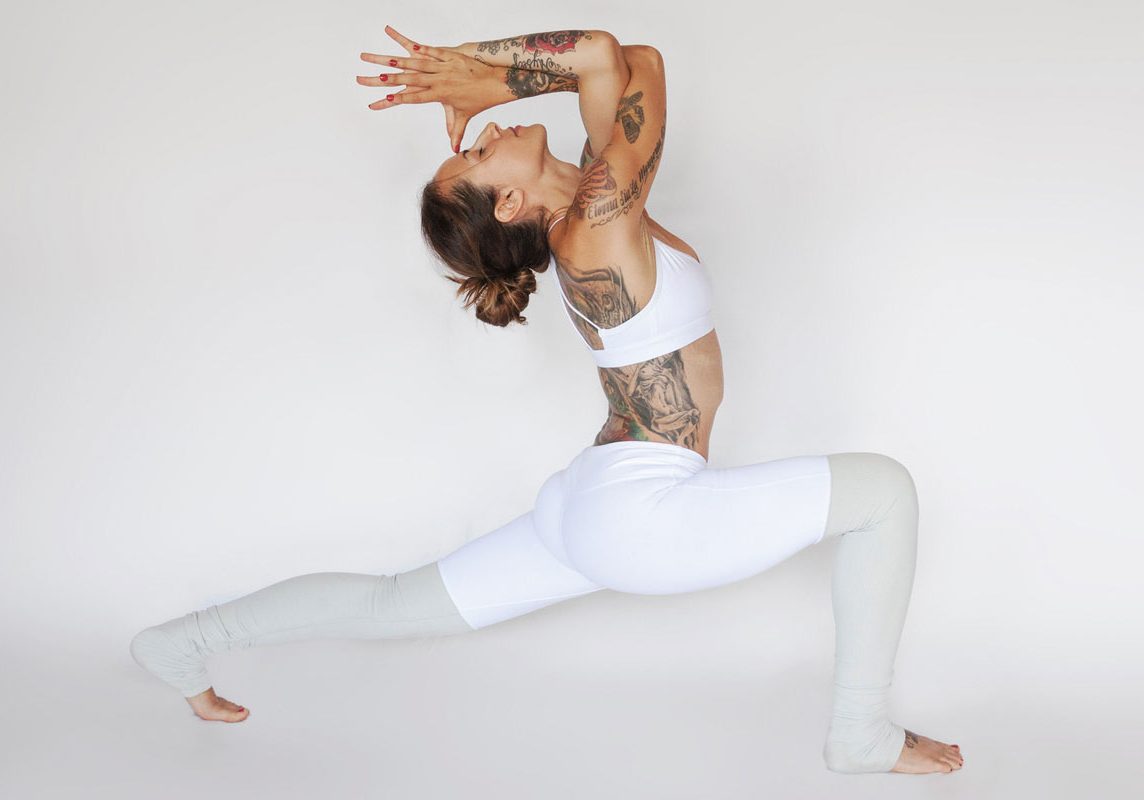
3 High Lunge – Eagle Arms
Ashta chandrasana, or crescent high lunge pose, is a standing balancing asana and is close to the warrior family of poses. It helps you develop a sense of strength and prepare the front of the body to open up in your backbend practice. Eagle arms will help you to open the back of your shoulders as well. From low lounge, be sure your hands are framing your front foot. Inhale and press the floor away, engaging your core and bringing the gaze directly in front of you. Continue activating your legs, lifting the back knee from the floor and pull the lower belly up off the front thigh and into the spine. Draw the tailbone down towards the back heel, as you simultaneously lengthen the spine up towards the top of the head. Imagine you are being stretched and pulled from both your head and your back foot. Once you lift your arms over the head wrap the right arm under the left one and find your eagle arms.
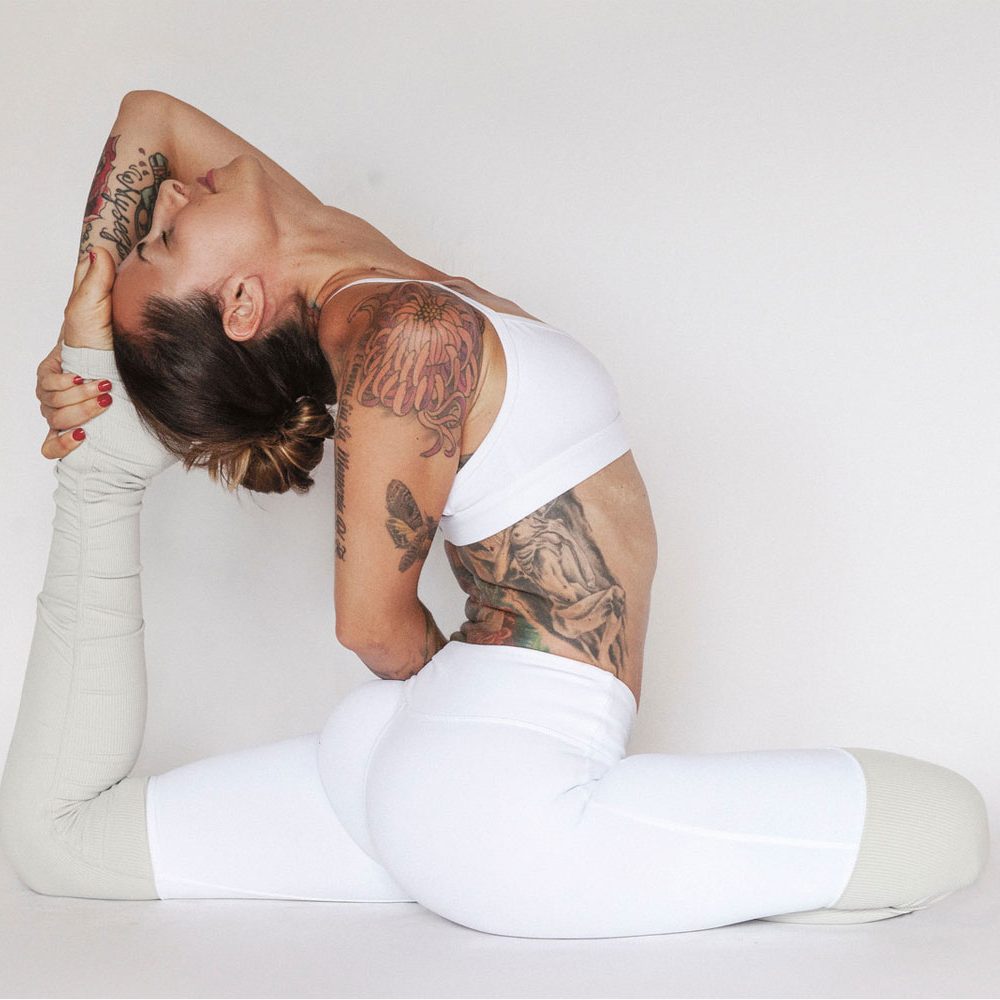
4 Pigeon Pose
Eka Pada Rajakapotasana works as a hip opener and forward bend, stretching your thighs, groin, back, piriformis, and psoas. The leg extended to the rear gets a stretch of the psoas and other hip flexors. On the other side, the rotators and outer hip are stretched. It is a good antidote to sitting for long periods. It prepares you for seated postures and backbends. From high lunge bring your arms on the ground to frame the front foot and step the front leg back in a down dog. Lift your right leg back and on the exhale bring your right knee forward towards your right wrist. Depending on your body it may be just behind your wrist or to the outer or the inner edge of it. Experiment with what feels right for you, giving you a stretch on your outer hip without any discomfort in your knee. Slide your left leg back and point your toes, your heel is pointing up to the ceiling. Draw your legs in towards each other. Use some support under your right buttock if needed to keep your hips level. As you inhale, come onto your fingertips, lengthen your spine, draw your navel in and open your chest. As you exhale, walk your hands forward and lower your upper body towards the floor. You can rest your forearms and forehead on the mat. (A more advanced option is shown in the photograph).
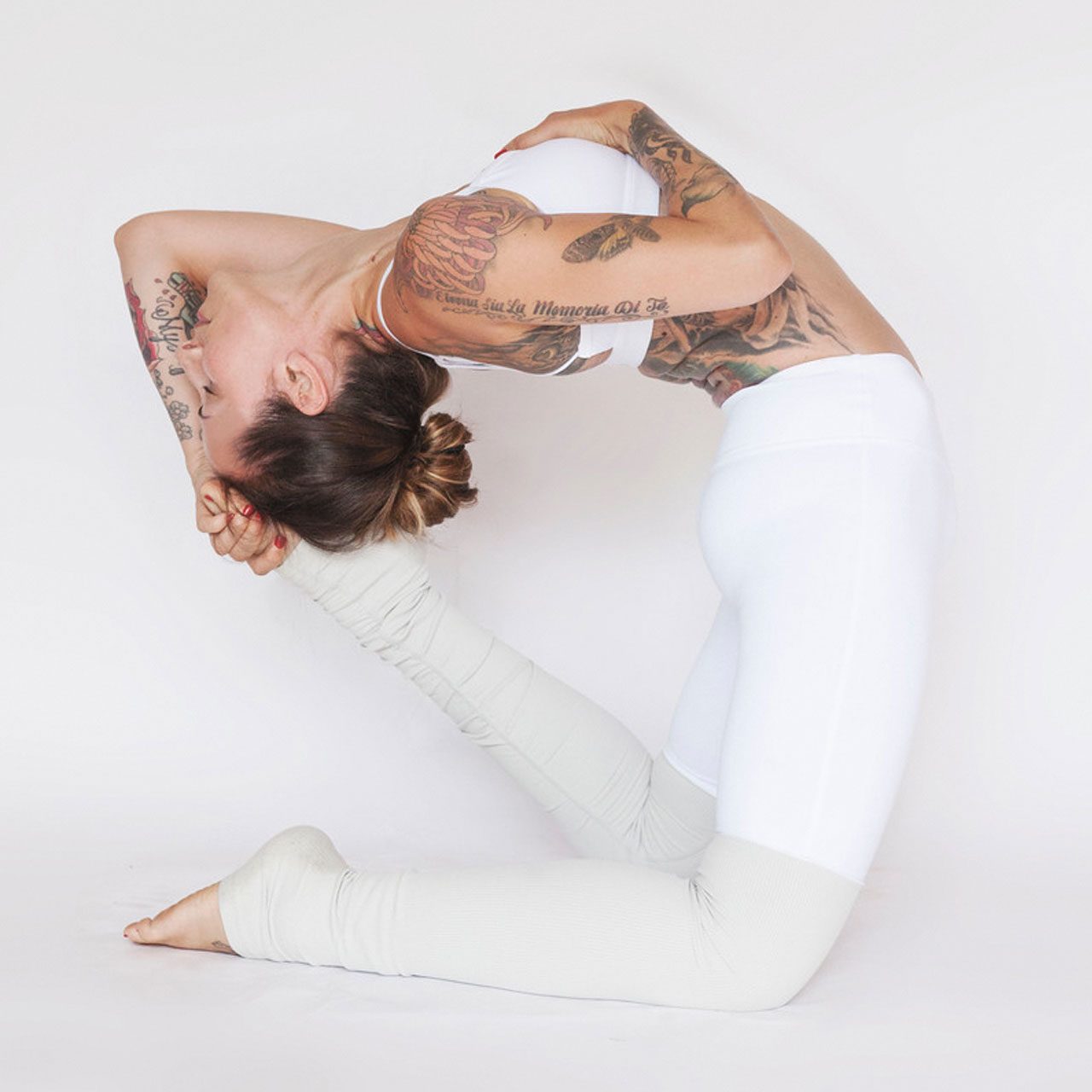
5 Camel Pose
Camel Pose (ustrasana) is a backbend that stretches the whole front of the body. It is performed on the knees and is often used as preparation for deeper backbends. Ustrasana stretches the front of the body, particularly the chest, abdomen, quadriceps, and hip flexors. It improves spinal flexibility, while also strengthening the back muscles and improving posture.
From pigeon pose slowly, taking all the time you need, press both the palms of your hands on the floor and move back into your down dog. Inhale and on the next exhale move into your table top position. Enter the pose by kneeling upright with your knees hip-distance apart. Rotate your thighs inward and press your shins and the tops of your feet into the floor. Rest your hands on the back of your pelvis, with your fingers pointing to the floor. Lengthen your tailbone down toward the floor and widen the back of your pelvis. Lean back, with your chin slightly tucked toward your chest. Beginners can stay here, keeping their hands on their back pelvis.
If you are comfortable here, you can take the pose deeper. Reach back and hold onto each heel. Your palms should rest on your heels with your fingers pointing toward your toes and your thumbs holding the outside of each foot. Keep your thighs perpendicular to the floor, with your hips directly over your knees. If it is difficult to grasp your heels without feeling compression in your low back, tuck your toes to elevate your heels. You can also rest your hands on yoga blocks placed to the outside of each foot. Lift up through your pelvis, keeping your lower spine long. Turn your arms outward without squeezing your shoulder blades. Keep your head in a neutral position, or allow it to drop back without straining or crunching your neck.
Yogini: Eleonora Rachele Zampatti @eleonorazampatti Wearing: Alo Yoga @Aloyoga


